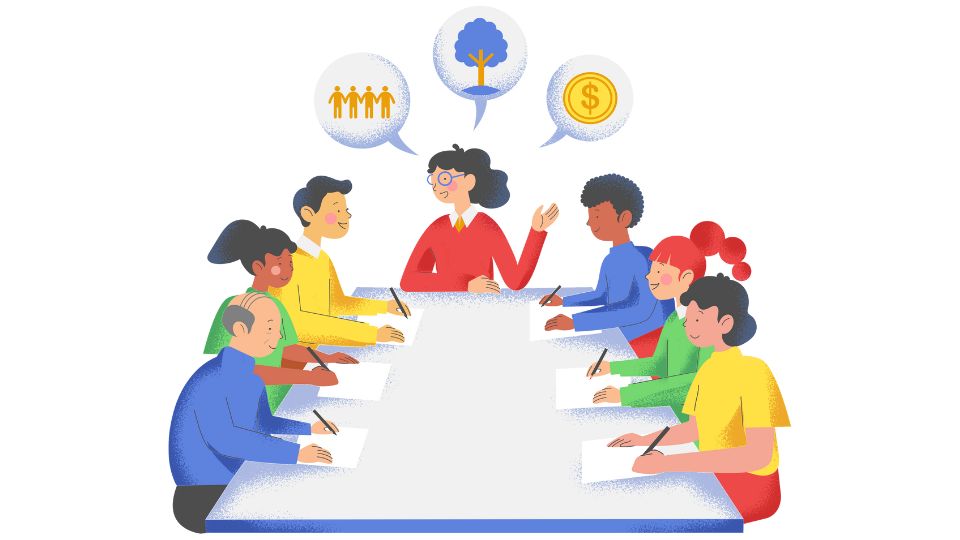What Topics Should a Retrospective Agenda Cover?
In Agile software development, retrospectives are essential for continuous improvement, allowing teams to reflect on their performance and identify ways to grow. A well-structured retrospective agenda ensures that every critical area is covered, maximizing the effectiveness of these meetings. Here are the key topics that should be included in a retrospective agenda to drive team success and improvement.
1. Setting the Stage: The Retrospective Prime Directive
Before diving into the main topics, it's important to start the retrospective with a few key elements:
- Purpose Reminder: Reiterate the goal of the retrospective—reflecting on the sprint and identifying areas for improvement.
- Blame-Free Environment: Establish a constructive and blame-free atmosphere where team members feel safe to express their thoughts.
- Sprint Overview: Briefly review the sprint's goals and outcomes to provide context for the discussion.
2. Celebrating Successes
Kick off the retrospective on a positive note by discussing:
- Achievements and Milestones: Acknowledge what went well and the key goals that were reached during the sprint.
- Effective Processes: Recognize processes or practices that worked exceptionally well and contributed to the team’s success.
- Team and Individual Contributions: Celebrate individual and team accomplishments to boost morale and foster a sense of pride.
3. Identifying Challenges
Address obstacles head-on by exploring:
- Roadblocks and Impediments: Discuss any obstacles or challenges the team faced that hindered progress.
- Unmet Targets: Identify missed targets or any expectations that were not met during the sprint.
- Technical Bottlenecks: Look at any technical issues that caused delays or inefficiencies, such as system failures or integration problems.
4. Lessons Learned
Reflect on the educational value of the sprint:
- New Skills or Knowledge: What new techniques, tools, or skills did the team acquire during the sprint?
- Insights from Success and Failure: What did the team learn from both the wins and the challenges they faced?
- Unexpected Outcomes: Highlight any surprising outcomes and discuss their implications for future sprints.
5. Team Dynamics and Collaboration
Assess the human element of the sprint:
- Communication Effectiveness: Evaluate how well team members communicated throughout the sprint.
- Collaboration Successes and Pain Points: Discuss areas where collaboration worked well and areas where it could be improved.
- Team Morale and Engagement: Assess the overall morale of the team, including motivation and engagement levels.
6. Process Evaluation
Critically assess your methodologies and workflows:
- Agile Practices: How effective were the current Agile practices (Scrum, Kanban, etc.) in this sprint?
- Process Improvement: Identify areas where processes could be streamlined or improved.
- Tool and Technique Assessment: Evaluate the tools and techniques used during the sprint—are they serving the team’s needs effectively?
7. Customer and Stakeholder Feedback
Consider external perspectives:
- Client/End-User Feedback: Discuss any feedback received from customers or end-users regarding the product.
- Stakeholder Satisfaction: How satisfied were stakeholders with the sprint's outcomes?
- Improvement Areas in Client Interactions: Identify opportunities to improve customer or stakeholder communication and collaboration.
8. Metrics and KPIs
Analyze quantitative data from the sprint:
- Sprint Velocity and Burndown Charts: Review the sprint’s progress in terms of velocity and whether tasks were completed as planned.
- Quality Metrics: Look at quality metrics such as bug rates, test coverage, and defect counts.
- Time Spent on Tasks: Discuss how time was spent across different types of work (e.g., development, testing, support).
9. Action Items and Improvements
Conclude with a forward-looking discussion:
- Specific, Actionable Improvements: Identify concrete actions the team can take to improve performance in the next sprint.
- Responsibility Assignment: Assign team members responsible for implementing the action items.
- Timeline for Follow-Up: Set clear timelines for checking on the progress of action items.
10. Kudos and Appreciation
End on a positive note with:
- Individual Recognition: Acknowledge standout contributions from team members.
- Team Efforts: Celebrate the collective achievements and progress the team has made.
- Celebration of Small Wins: Even small victories should be celebrated to maintain team morale.
Structuring Your Retrospective for Success
To make the most of these topics:
- Time Allocation: Ensure that more time is allocated to forward-looking items, such as action items and process improvements, while also keeping the tone positive with celebration and acknowledgment.
- Discussion Techniques: Use varied discussion methods (e.g., brainstorming, voting, etc.) to keep everyone engaged and ensure all team members contribute.
- Encourage Open Participation: Create a safe environment where everyone feels comfortable sharing their thoughts and ideas.
- Document the Discussions: Keep records of decisions, action items, and key takeaways for future reference and follow-up.
Vabro: Elevating Your Retrospective Experience
While a well-structured agenda is key to successful retrospectives, Vabro can take your retrospectives to the next level with advanced features:
- Customizable Templates: Tailor retrospective templates to ensure all key agenda items are covered.
- AI-Powered Insights: Leverage AI to receive suggestions based on team history and sprint data.
- Real-Time Collaboration: Facilitate seamless remote retrospectives with Vabro’s real-time collaboration features.
- Automated Action Item Tracking: Track action items and receive follow-up reminders to ensure continuous improvement.
- Comprehensive Sprint Analysis: Integrate your retrospective data with your sprint data for a more holistic view of team performance.
Conclusion
A well-structured retrospective agenda ensures that key topics are covered, helping teams reflect on the past sprint, learn from their experiences, and continuously improve. Tools like Vabro enhance this process by offering customizable templates, real-time collaboration, and data-driven insights, enabling teams to evolve faster and more effectively.
